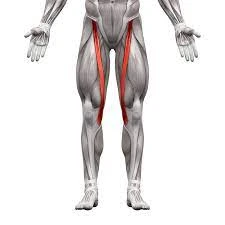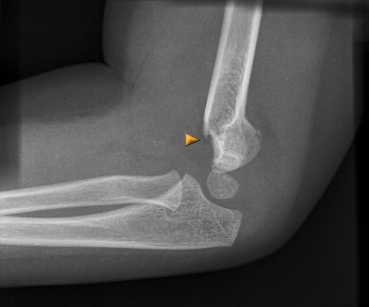9 Best Stretching Exercises for Hamstring Injury
People who frequently run, climb, leap, or lunge, such as athletes, are more likely to suffer from a painful hamstring injury. Rest, ice, compression, elevation, and mild stretching before beginning simple workouts are all part of the treatment plan. The majority of therapies are accomplished at-house. Depending on the extent of the injury, healing may take a few days or several months.
Hamstring rehabilitation activities can help recovery and help to control future damages. Rehabilitation protocols generally include a combination of stretching and strengthening exercises. While painful hamstring strains may need surgery, less painful injuries can heal with suitable initial therapies and proper exercises. here we only discuss the stretching in detail for hamstring injuries.
Stretching can target a range of movement deficiencies, and strength workouts that start with low intensity can help recovery. A physician will prescribe the most effective rehabilitation plan for a person’s exact injury. This article discusses methods for hamstring injury recovery and describes stretches that someone may use for hamstring injury rehabilitation.
Introduction
Hamstring injuries are typical muscle strains. They are normally treatable with the RICE approach: rest, ice, compression, and elevation, though more recent techniques, such as cryotherapy, are known. Once the muscle is prepared, stretching can aid recovery. It is important to follow a physician’s rehabilitation protocol and follow up with a physical therapist.
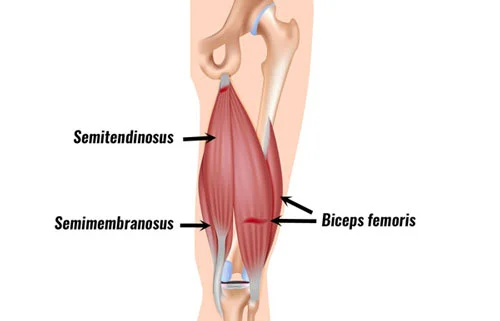
Some hamstring stretching may contain the modified hurdler’s stretch, supine hamstring stretch, and seated toe touches. Also, eccentric hamstring and hip extensor activities can help strengthen the hamstring during rehabilitation. The best method to prevent hamstring injuries is to know what generates them. In the case of hamstring pulls, specifically, there are many possible causes.
If you don’t take the time to warm up correctly, you can pull the hamstring. A right warm-up is especially important if you have tight hamstrings. It gets them loose enough to sustain the movement performed during the main part of the workout. A workout above your fitness level can also lead to a hamstring injury. It is possible to strain a muscle by pushing it too far. A strain or pull can also occur if you overtrain without giving the muscle sufficient time to heal.
Improving the intensity or duration of your training too quickly is another possible cause. This is why progressing slowly is advised. Injury can result if you try to ramp up your training too fast.
Having a prior hamstring injury raises your chances of injuring this muscle again. If the injury is current, jumping back into training too soon can raise this risk further.
Runners may experience a hamstring pull if they have a flawed running technique. The wrong technique puts more pressure on the hamstring. If this pressure becomes too much, it can lead to a strain or tear.
What is an injury to the hamstrings?
A pull or tear (hamstring strain) in the group of muscles and tendons in the back of your thigh is known as a hamstring injury. It’s one of the most prevalent and stressful illnesses mostly affecting athletes.
What is the hamstring? How does it normally work?
- The biggest muscle in your thighs, the hamstring, attaches to your bone. Allowing your leg to flex (bend) and lengthen (stretch) is the primary function of your hamstring. The most common way to use your hamstring is to:
- lunge
- Run
- Climb
- Take off
- Exert excessive force
Hamstring injury recovery
Hamstring muscle injuries are a common type of sports injury.
A muscle strain is when a muscle is overstuffed or overstretched. There are 3 types of strains: grades 1, 2, and 3.
- Grade I: There is a small structural disruption, and the muscle recovers quickly.
- Grade II: This means there is a partial break.
- Grade III: This refers to a full tissue rupture and a prolonged recovery time.
A physician can diagnose the damage type and severity and prescribe an appropriate rehabilitation plan. Depending on the wound grade, surgery may be essential.
For most sports-related damages, the RICE method can be useful. This involves:
- Rest: Pause sports. A physician may suggest crutches.
- Ice: Utilize ice packs in 20-minute intervals, but do not place them directly on the skin.
- Compression: Utilize an elastic compression bandage.
- Elevation: Recline and place the leg higher than the heart.
Analysis has also shown that cryotherapy can effectively relieve pain, inflammation, and tissue injury.
Once the swelling and pain have been relieved, healing strengthening and stretching activities can help recovery and prevent future injury. Before increasing the intensity, experts suggest starting with low-intensity, pain-free physical movements.
Benefits of Hamstring stretches
Hamstring stretching can keep the hamstrings flexible and relaxed. Flexible hamstrings have multiple benefits, such as:
Preventing lower back pain
Tight hamstrings decrease the mobility of the pelvis, which can put stress on the lower back. Strengthening and stretching the hamstrings can prevent them from becoming too tight and supply extra support for the back and pelvis.
Reducing injuries
Supporting the hamstrings flexibly will decrease the chance of straining or tearing the muscle fibers during severe physical activities, such as running.
Increasing flexibility
Hamstring stretching can improve flexibility and enhance the range of movement in the hip. Both of these advantages will assist people in performing everyday tasks, such as walking upstairs and bending over, with ease.
Improving posture
When the hamstrings are excessively tight, the muscles rotate the pelvis backward. This can flatten the natural arch in the back, which can generate poor seated and standing posture. Keeping the hamstrings flexible can help people sit straighter and stand taller.
Hamstring stretching activities can aid during rehabilitation. However, individuals should always follow their physician’s prescribed stretching protocol to help prevent injury.
Best hamstring stretching to relieve injury:
Hamstring stretching will help keep the muscles flexible and mobile. These stretches should not cause pain. Only gently to moderately tense areas should be stretched. Those who overstretch risk damage and should refrain from doing so until their flexibility improves with time. Hamstring stretching activities can aid during rehabilitation. However, individuals should always follow their physician’s prescribed stretching protocol to help prevent injury.
A person can use the following stretches to relieve muscle tightness in the hamstrings:
Lying hamstring stretch
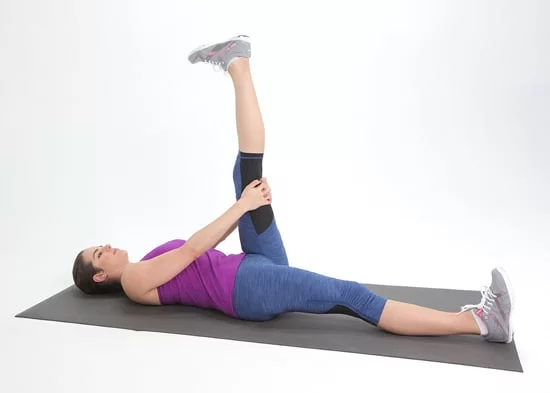
To do this stretching you have to Lie flat on the floor or a mat with the legs fully stretched out. To stretch the right leg, grab the back of the right knee with both hands, pull the leg up toward the chest, and gradually extend the knee until it feels like it is stretching. Hold this stretch for 30 seconds.
Lying hamstring stretch using a strap
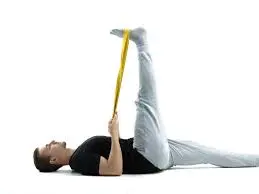
Lie flat on either the floor or a mat with the legs fully extended out. Bend the right leg and put the strap over the ball of the right foot to extend the leg. grab the strap in both hands. Keep the left leg extended on the floor with the foot flexed. This should push the thigh and calf toward the ground. Gradually straighten the right leg with the foot bent. The right leg should be straight with a slight flex in the knee, and the bottom of the foot should face the roof. slowly pull the strap until there is a slight tension in the hamstrings. Maintain this stretch for 30 seconds. Repeat 2 to 4 times.
Lying hamstring stretch using a wall
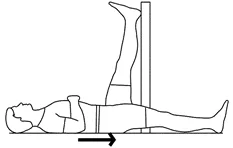
See an open doorway. Lie flat on either the floor or a mat, with the back flat and the left leg fully extended on the bed. The left leg should fit through the opening of the door. Learn the right leg against the wall next to the doorway. Modify the distance between the body and the wall to achieve mild tension in the right leg. Maintain the stretch for thirty seconds. Repeat 2 to 3 times.
Sitting hamstring stretch
To stretch the right leg, sit on the floor with the left leg bent at the knee with the foot facing inward. This is named the butterfly position. Raise the right leg, keeping it slightly flexed at the knee. Lean forward at the waist, making sure to maintain the back straight. Hold this stretch for 30 seconds. Repeat three times.
Sitting hamstring stretch using a chair
Seat with the back straight near the border of the chair. Maintain the feet flat on the ground. To stretch the right leg, extend it with the heel on the ground and the toes pointing toward the roof. Tilt forward at the hip and place the hands on the left leg for support. keep sure the spine is in a neutral position. Hold this stretching for thirty seconds. Repeat three times.
Standing hamstring stretch using a table
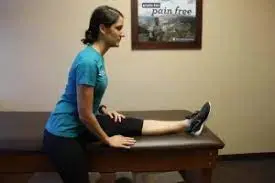
Find a table that is just smaller than hip height. Stand erect with the spine in a neutral position. Put the right leg on the table with the foot flexed, so the toes point toward the roof. Stand far sufficiently away from the table so that only the foot and part of the calf rest on the table. Tilt forward at the waist until there is a stretch in the hamstring muscle. To improve the intensity of the stretch, flex forward slightly, placing the hands on the leg or the table for support. Maintain the stretch for up to thirty seconds. Wait fifteen seconds then repeat 3 times.
Foam roll hamstring stretch
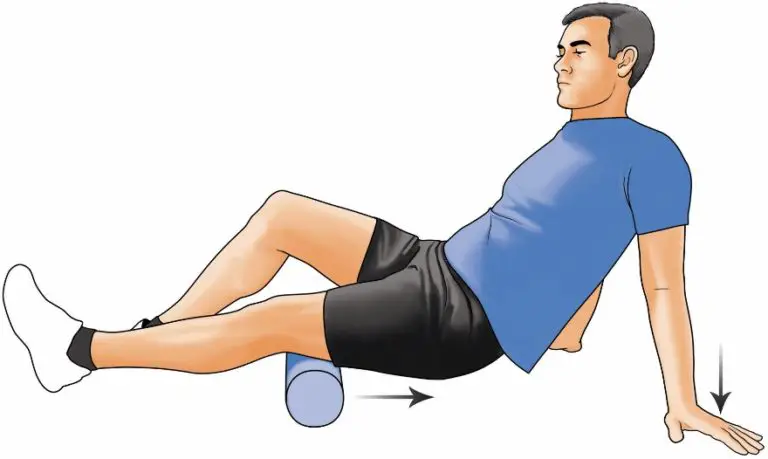
Seat on the ground or on the bed with your legs extended straight. Bend the opposite leg, keeping the foot flat on the ground, and place the foam roll flat beneath the hamstring of one leg. Raise the buttocks off the mat while maintaining balance with the hands flat on the floor.
Make lengthy, sweeping movements with the body back and forth, stopping short of the back of the knee. To ensure that the roller covers the right, left, and middle hamstring muscles, gently twist the thigh.
Modified hurdler’s stretch
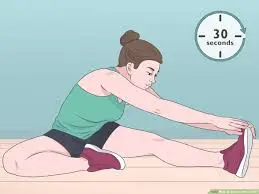
To do this stretching take a sitting position, straighten the legs in front of the body, and point the toes toward the sky. Bring the left foot inside the right thigh and bend the left knee. Sliding the hands towards the ankle, slowly pivot forward from the hips. Strive to keep your back flat. Try to stretch yourself, but avoid going too far to the point of pain. Resuming an upright posture after a few seconds of holding, repeat. Change positions.
Seated toe touches
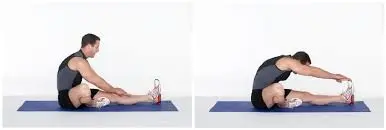
Stretch your legs out in front of you while seated, pointing your toes upward. Avoid bending your knees. Sliding the hands towards the ankles, slowly bend forward from the hips. Avoid pushing yourself to the point of pain and try to keep your back flat. Resuming an upright posture after a few seconds of holding, repeat. Change positions.
Tips for stretching
- Before and after excising are good times to do hamstring stretches.
- Before working out, people should always warm up. During a warmup, people’s heart rates rise while they jog or stroll. Heart rate can be raised to increase blood flow throughout the body, which provides oxygen to the muscles. This lowers an individual’s chance of injury while also improving workout performance.
- Stretching should be done after the warm-up. Stretching could cause the muscle fibers to become strained or even torn if the muscles are not sufficiently heated up.
- There is still disagreement on the benefits of stretching before working out. There is conflicting evidence about the physical benefits of warm-up stretches and the potential benefits of pre-exercise stretches in preventing injury.
- Stretching beforehand is necessary to increase flexibility, though, especially for athletic activities like dancing and gymnastics.
- Stretching following exercise helps release tense muscles and reduces lower back pain. This could hasten muscle recovery and lessen soreness following exercise.
- Both athletes and non-athletes who do not participate in sports can benefit from hamstring stretches. Daily stretching can maintain limber, energize muscles, and enhance blood flow.
Home remedies
- Recall R.I.C.E. protocol R for rest, ice, compression, and elevation.
- Until the pain subsides, stop doing your physical activity, or at least cut down on it.
- About 24 to 48 hours after your injury, apply ice to the region. Apply the ice for fifteen minutes, remove it for fifteen minutes, and then repeat.
- A compression wrap or an elastic thigh sleeve can be used. Wear it anytime you aren’t taking icing.
- To keep your flexibility, perform mild range-of-motion exercises.
- Your damaged leg is hanging off as you sit on a table. During the icing phase, gently lift and drop your leg. After ice, continue to gradually bend and straighten your leg while lying prone on your stomach.
- Take over-the-counter medications in the form of pills, gels, and/or creams.
- If walking aches too much, use crutches.
FAQ
Why am I so tight in my hamstrings?
Long periods of sitting, not stretching enough before exercise, strained muscles from a previous injury, and having short hamstrings or tight hamstrings can be caused by a variety of physical factors that raise the risk of hamstring strains.
How much time does it take to release tense hamstrings?
Relieving the tightness could take a few weeks to many months if a person follows a regular therapy program. The cause and degree of tightness can affect how long it takes.
How often should I stretch my hamstrings in a day?
Stretching the hamstrings is recommended, ideally more than once a day.
Does stretching help with hamstring injuries?
Stretching gently helps in the healing process. Excessive hamstring stretching will impede your recovery. After three to five seconds, return your leg to the starting position. Once a day, perform three sets of twelve repetitions.
How can a hamstring be healed quickly?
For the first several days or weeks following your injury, follow these instructions:
Rest: stop any painful physical exercise.
Ice; Two or three times a day, apply ice to your hamstring for approximately 20 minutes.
compression: Pain and swelling can be lessened using a compression bandage or wrap.
Is walking beneficial for hamstring strains?
Gentle exercises and stretches
When the soreness begins to go after a few days, that’s when you should start exercising gentle hamstring stretches to prevent this. A program of mild exercise, such as walking and cycling, and hamstring strengthening exercises should come next.
Is hamstring injury helped by physiotherapy?
The use of physiotherapy is crucial while managing a pulled hamstring.
When I have a hamstring injury, how should I sleep?
There are no specific sleeping positions that are beneficial for hamstring strains. Wearing your elastic thigh sleeve or compression wrap is advised, though.
References
- Monte, M. (2023, February 28). What are hamstring rehab exercises? https://www.medicalnewstoday.com/articles/hamstring-rehab-exercises
- Hamstring Strain Exercises New York | Hip Exercise New York. (n.d.). Jaspal Ricky Singh, M.D. https://www.rickysinghmd.com/hamstring-strain/
- What to do for a pulled hamstring: 5 corrective Exercises | ISSA. (n.d.). https://www.issaonline.com/blog/post/what-to-do-for-a-pulled-hamstring-5-corrective-exercises
- Professional, C. C. M. (n.d.-d). Hamstring injury. Cleveland Clinic. https://my.clevelandclinic.org/health/diseases/17039-hamstring-injury



